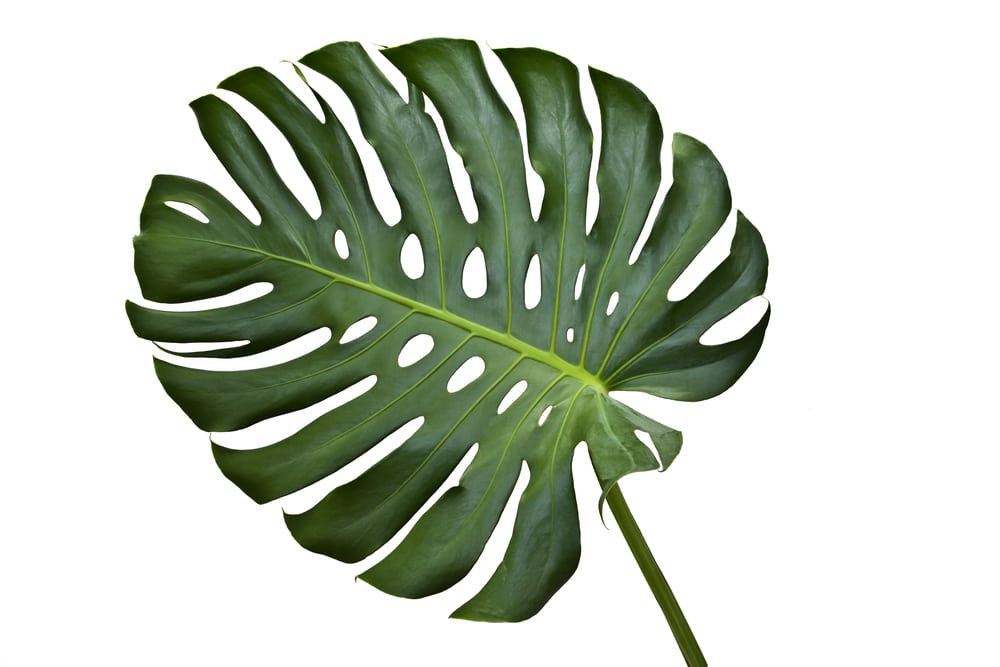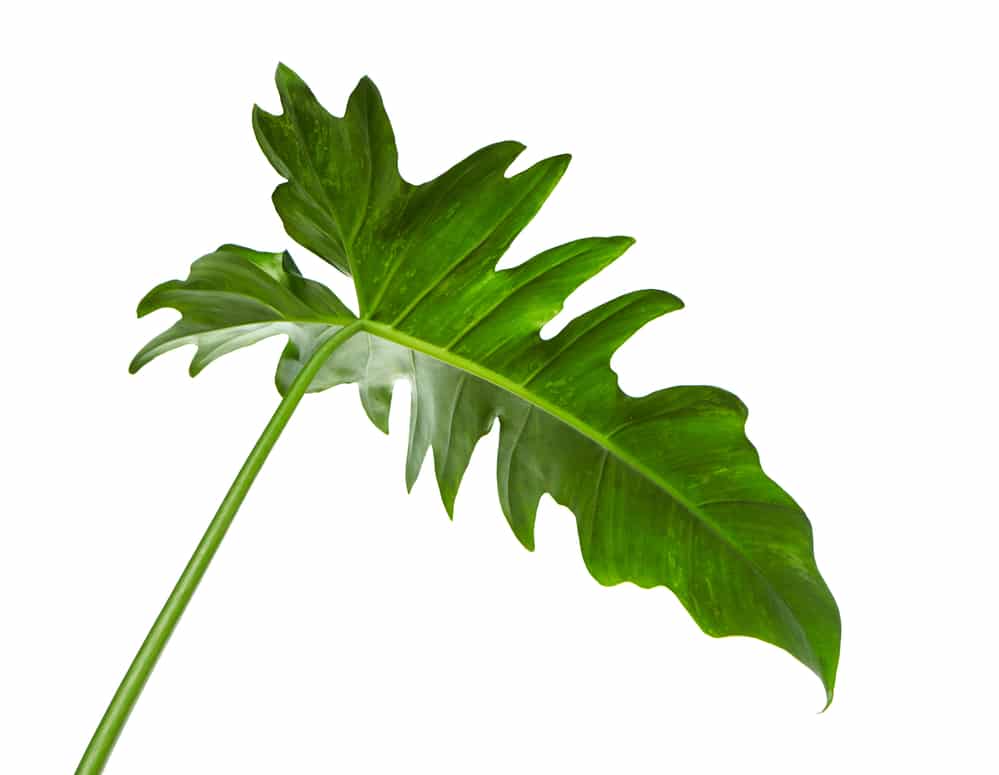If you love houseplants with big, bold leaves and lots of dramatic flair, you’ve probably heard about split-leaf philodendrons. In fact, you may already have one. But did you know the name
“split-leaf philodendron” is frequently used to refer to two different houseplant species: monsteras and philodendrons?
That’s right, there’s a lot of confusion happening in houseplant circles today because the ever-popular Monstera deliciosa is often mistakenly labeled as a philodendron species, although they are entirely different. Even professional houseplant growers commonly make this mistake, so it’s no wonder if you feel a bit uncertain about which type of plant you actually have.
In this guide, we’ll discuss the differences between Monstera deliciosa and true split-leaf philodendrons (Philodendron bipinnatifidum or Philodendron selloum). Understanding what makes both of these plants unique will help you correctly identify your plant so you can give it the care it needs.
Key Takeaways
- Monstera leaves are generally larger and more round than split-leaf philodendron leaves.
- Monstera leaves are fenestrated and usually have a “holey” look while split-leaf philodendron leaves look more like ruffled fingers.
- Both monstera and split-leaf philodendron are toxic.
How to Identify Split-Leaf Philodendrons vs. Monsteras?
Both split-leaf philodendrons and monsteras have large, showy leaves that can easily make them the stars of any houseplant collection.
However, there are some key differences between these two species that can help you identify them.
Below are the top 6 ways you can easily tell these plant species apart.
1. Leaf shape and size
While both philodendrons and monsteras have large leaves, monstera leaves are generally much bigger. Although young monstera leaves don’t get as big, by age three or so, Monstera deliciosa may start producing massive, glossy leaves that can get as large as 3’ long by 2’ wide.

Although split-leaf philodendron leaves can also grow to about 3’ long, they stay much narrower and don’t take up quite as much space as monsteras do.

What’s more, monstera leaves generally take on more of a heart-like shape, while philodendron leaves tend to be smaller, rounder and with more of a frilly and feather-like appearance.
2. Leaf holes
The leaves of both Monstera deliciosa and split-leaf philodendron have highly recognizable holes in them. But those holes are markedly different.
Monstera leaves are smooth, flat and glossy and become “fenestrated” as the leaf ages. This means that holes develop and grow in size as the leaf matures, producing an ever-changing leaf look. Once fully mature, Monstera leaves feature that highly coveted “holey” look, that has made this plant such a popular design to use on clothing and home goods.
Split-leaf philodendron leaves are more ruffled in appearance and the holes on these leaves are really splits in the leaf’s surface, dividing the leaf’s margins into a series of ruffled fingers. Unlike monsteras, philodendron leaves don’t get holier as they age. They just grow larger.
What’s more, the splits in philodendron leaves extend all the way to the leaf’s edges, while the holes in monstera leaves may not.
3. Growth habit
Split-leaf philodendrons grow faster than monsteras and generally maintain a more horizontal growth pattern. Philodendrons can double in height quickly and, if left unchecked, can grow 15’ feet or more across. For this reason, philodendrons need to be repotted more frequently, approximately once every year or two.
Monsteras, on the other hand, maintain more of a vertical growth habit and often climb in nature to get better access to sunlight. As a result, monstera houseplants usually require moss poles or some other support system to maximize their growth. Additionally, monsteras just don’t grow as fast and only grow about 2’ per year.
4. Fruit
Many houseplant owners don’t know that Monstera deliciosa actually produces an edible fruit (hence the name “deliciosa”). However, if you’re interested in eating this intriguing fruit, be sure to wait until it is fully mature and ripe, as unripe fruit can cause burning to oral tissue and other unpleasant sensations.
Fruiting is much rarer in true split-leaf philodendrons and whatever fruit is produced should be avoided, as it is toxic if ingested.
5. Toxicity
Although there are many difference between split-leaf philodendrons and monsteras, toxicity isn’t one of them. Both of these plants are toxic if ingested (except for the fully ripened fruit of Monstera deliciosa). For this reason, both houseplants should be kept far out of the reach of house pets and small children.
6. Origin
Monstera deliciosa originally comes from the tropical rainforests of Mexico and Central America, where it can grow over 60’ tall in nature.
While split-leaf philodendron is also a tropic species, it originally hails from the rainforests of South America, including Brazil, Argentina and Bolivia.
How to Care For Split-Leaf Philodendrons vs. Monsteras?
Determining whether you have a philodendron or monstera is an essential step towards ensuring that you are providing your houseplant with the best care possible. Although both plant species are tropical plants, they do have slightly different care requirements.
Soil
Both monsteras and philodendrons do best with rich and well-draining potting mix. Although they can grow in regular potting mix, stirring in some coconut coir or perlite can improve the soil’s aeration and drainage and lead to healthier root systems.
Philodendrons are slightly more sensitive to pH variations and salt buildup, which can cause yellowing leaves. To prevent this, be sure to use a quality potting mix and water with rain or filtered water only.
Water
Both plants enjoy a moderate amount of water, but they can be susceptible to root rot. To prevent this, water your plants only when the top 1” of soil feels dry to the touch. When you water, water deeply and then allow all excess water to flow away from the plant, rather than remaining in the pot’s saucer.
To prevent waterlogged roots, be sure to pot up your houseplants in well-draining planters with adequate drainage holes.
Light
Similarly, both monsteras and philodendrons grow best in bright, indirect light – approximately 8 hours a day should do. Monsteras, in particular, can be susceptible to sunscald if they are placed in full sun, so be sure to protect them with a sheer curtain if you have a particularly bright window. Alternatively, if you’re growing your plants outdoors during summertime, locate your plants in a shadier spot of your yard.
Pests
Like many other houseplants, these plants are susceptible to common houseplant pests, including spider mites, aphids, thrips and mealybugs. To prevent issues from occurring, check your plants from time to time for common signs of infestation, like yellowing or speckling on leaves, dry looking leaves, leaf drop and visible webbing from spider mites.
If you keep your plants outdoors during the summer, remember to treat them thoroughly with an organic insecticidal soap spray prior to bringing them indoors. This will prevent any overwintering pests from cropping up in your houseplant collection.
Fertilizer
Because of their faster growth rate, philodendrons have higher fertilizer needs than monsteras. For best growth, try fertilizing your philodendrons about once a month, with a quality organic fertilizer that’s rich in nitrogen.
While monsteras don’t strictly need additional fertilizer, their soil can become depleted over time, so adding a dose of organic fertilizer every few weeks throughout the growing season can help your plant grow larger. That said, be sure to dial back your fertilizer application rate in fall and winter, when your plant’s growth slows.
Repotting
Due to their faster growth rate, split-leaf philodendrons will usually need to be repotted more frequently than monsteras. While this will depend on your individual houseplant, be prepared to repot your philodendron about once every 1 to 2 years. When repotting, only repot your plant into a pot about 1 to 2 sizes larger than your existing pot to keep from overwhelming your plant.
Slower growing monsteras don’t need to be repotted quite as often as philodendrons; however, because they grow more vertically, they can benefit from the addition of a moss pole or other support.
Frequently Asked Questions
Here are a few of the most common questions that we get about differentiating split leaf philodendron and Monstera:
Is split leaf philodendron the same as Monstera?
No. Although the two plants look alike, they are actually two different species: Monstera deliciosa and Philodendron bipinnatifidum. The confusion comes from the fact that Monstera deliciosas are often mislabeled as philodendrons at plant nurseries.
How can you tell if a plant is a Monstera?
One of the surest ways to determine if you have a monstera is to check for “fenestrations.” Fenestrations are small holes in the leaves that develop into larger splits as the leaf matures. While philodendrons have split leaves too, their splits do not get larger as the leaf ages.
What is the difference between Swiss cheese plant and Monstera?
Several different monstera varieties are also sometimes referred to as “Swiss cheese plants.” Monstera deliciosa is sometimes called by this name, as is the closely related Monstera adansonii.
Summary
At first glance, split-leaf philodendrons and Monstera deliciosa may look the same, but they are actually two very different species. The confusion around these two plants stems from the fact that monsteras are sometimes misidentified by plant nurseries as philodendrons, but the plants are only distantly related and have different care requirements.
Being able to correctly identify your houseplant can give you greater confidence with your houseplant collection and help to ensure that you understand your plant’s unique care requirements.
If you enjoyed this article, be sure to check out our other content on monstera and philodendron to learn more.

